Ryobi Brushless RIW1838C Handleiding
Ryobi
Schroefmachine
Brushless RIW1838C
Bekijk gratis de handleiding van Ryobi Brushless RIW1838C (12 pagina’s), behorend tot de categorie Schroefmachine. Deze gids werd als nuttig beoordeeld door 68 mensen en kreeg gemiddeld 4.9 sterren uit 34.5 reviews. Heb je een vraag over Ryobi Brushless RIW1838C of wil je andere gebruikers van dit product iets vragen? Stel een vraag
Pagina 1/12

RIW1838C

2
Original Instructions
IMPORTANT!
It is essential that you read the instructions in this manual
before assembling, operating, and maintaining the
product.
Subject to technical modication.
Safety, performance, and dependability have been given top
priority in the design of your impact wrench.
INTENDED USE
The impact wrench is intended to be used only by adults who
have read and understood the instructions and warnings in
this manual, and can be considered responsible for their
actions.
The product is intended for fastening and removing screws
and bolts using an impact socket.
The product is intended for consumer use only.
Do not use the product for any other purpose. Use of the
product for operations dierent from intended could result in
a hazardous situation.
GENERAL POWER TOOL SAFETY WARNINGS
WARNING! Read all safety warnings, instructions,
illustrations and specifications provided with this
power tool. Failure to follow all instructions listed below
may result in electric shock, re and/or serious injury.
Save all warnings and instructions for future reference.
The term “power tool’’ in the warnings refers to your mains-
operated (corded) power tool or battery-operated (cordless)
power tool.
WORK AREA SAFETY
■Keep work area clean and well lit. Cluttered or dark
areas invite accidents.
■Do not operate power tools in explosive
atmospheres, such as in the presence of flammable
liquids, gases or dust. Power tools create sparks
which may ignite the dust or fumes.
■Keep children and bystanders away while operating
a power tool. Distractions can cause you to lose control.
ELECTRICAL SAFETY
■Power tool plugs must match the outlet. Never
modify the plug in any way. Do not use any adapter
plugs with earthed (grounded) power tools.
Unmodified plugs and matching outlets will reduce risk
of electric shock.
■Avoid body contact with earthed or grounded
surfaces, such as pipes, radiators, ranges and
refrigerators. There is an increased risk of electric
shock if your body is earthed or grounded.
■Do not expose power tools to rain or wet conditions.
Water entering a power tool will increase the risk of
electric shock.
■Do not abuse the cord. Never use the cord for
carrying, pulling or unplugging the power tool. Keep
cord away from heat, oil, sharp edges or moving
parts. Damaged or entangled cords increase the risk of
electric shock.
■When operating a power tool outdoors, use an
extension cord suitable for outdoor use. Use of a
cord suitable for outdoor use reduces the risk of electric
shock.
■If operating a power tool in a damp location is
unavoidable, use a residual current device (RCD)
protected supply. Use of an RCD reduces the risk of
electric shock.
PERSONAL SAFETY
■Stay alert, watch what you are doing and use
common sense when operating a power tool. Do not
use a power tool while you are tired or under the
influence of drugs, alcohol or medication. A moment
of inattention while operating power tools may result in
serious personal injury.
■Use personal protective equipment. Always wear
eye protection. Protective equipment such as a dust
mask, non-skid safety shoes, hard hat or hearing
protection used for appropriate conditions will reduce
personal injuries.
■Prevent unintentional starting. Ensure the switch
is in the off-position before connecting to power
source and/or battery pack, picking up or carrying
the tool. Carrying power tools with your finger on the
switch or energising power tools that have the switch on
invites accidents.
■Remove any adjusting key or wrench before turning
the power tool on. A wrench or a key left attached to
a rotating part of the power tool may result in personal
injury.
■Do not overreach. Keep proper footing and balance
at all times. This enables better control of the power tool
in unexpected situations.
■Dress properly. Do not wear loose clothing or
jewellery. Keep your hair and clothing away from
moving parts. Loose clothes, jewellery or long hair can
be caught in moving parts.
■If devices are provided for the connection of dust
extraction and collection facilities, ensure these are
connected and properly used. Use of dust collection
can reduce dust-related hazards.
■Do not let familiarity gained from frequent use of
tools allow you to become complacent and ignore
tool safety principles. A careless action can cause
severe injury within a fraction of a second.
POWER TOOL USE AND CARE
■Do not force the power tool. Use the correct power
tool for your application. The correct power tool will
do the job better and safer at the rate for which it was
designed.
■Do not use the power tool if the switch does not turn
it on and off. Any power tool that cannot be controlled
with switch is dangerous and must be repaired.
■Disconnect the plug from the power source and/
or remove the battery pack, if detachable, from
the power tool before making any adjustments,
changing accessories, or storing power tools. Such
preventive safety measures reduce the risk of starting
the power tool accidentally.
■Store idle power tools out of the reach of children
and do not allow persons unfamiliar with the power
tool or these instructions to operate the power tool.
Power tools are dangerous in the hands of untrained
users.
■Maintain power tools and accessories. Check for
misalignment or binding of moving parts, breakage
of parts and any other condition that may affect the
power tool’s operation. If damaged, have the power
tool repaired before use. Many accidents are caused
by poorly maintained power tools.
■Keep cutting tools sharp and clean. Properly
maintained cutting tools with sharp cutting edges are
less likely to bind and are easier to control.

3
Original Instructions
■Use the power tool, accessories and tool bits etc.
in accordance with these instructions, taking into
account the working conditions and the work to
be performed. Use of the power tool for operations
different from those intended could result in a hazardous
situation.
■Keep handles and grasping surfaces dry, clean
and free from oil and grease. Slippery handles and
grasping surfaces do not allow for safe handling and
control of the tool in unexpected situations.
BATTERY TOOL USE AND CARE
■Recharge only with the charger specified by the
manufacturer. A charger that is suitable for one type
of battery pack may create a risk of fire when used with
another battery pack.
■Use power tools only with specifically designated
battery packs. Use of any other battery packs may
create a risk of injury and fire.
■When battery pack is not in use, keep it away from
other metal objects, like paper clips, coins, keys,
nails, screws or other small metal objects, that can
make a connection from one terminal to another.
Shorting the battery terminals together may cause burns
or a fire.
■Under abusive conditions, liquid may be ejected from
the battery; avoid contact. If contact accidentally
occurs, flush with water. If liquid contacts eyes,
additionally seek medical help. Liquid ejected from
the battery may cause irritation or burns.
■Do not use a battery pack or tool that is damaged or
modified. Damaged or modified batteries may exhibit
unpredictable behaviour resulting in fire, explosion or
risk of injury.
■Do not expose a battery pack or tool to fire or
excessive temperature. Exposure to fire or temperature
above 130°C may cause explosion.
■Follow all charging instructions and do not charge
the battery pack or tool outside the temperature
range specified in the instructions. Charging
improperly or at temperatures outside the specified
range may damage the battery and increase the risk of
fire.
SERVICE
■Have your power tool serviced by a qualified repair
person using only identical replacement parts. This
will ensure that the safety of the power tool is maintained.
■Never service damaged battery packs. Service
of battery packs should only be performed by the
manufacturer or authorised service providers.
IMPACT WRENCH SAFETY WARNINGS
■Hold the power tool by insulated gripping surfaces,
when performing an operation where the cutting
accessory or fasteners may contact hidden wiring.
Cutting accessory or fasteners contacting a “live” wire
may make exposed metal parts of the power tool “live”
and could give the operator an electric shock.
ADDITIONAL SAFETY WARNINGS
■Do not switch on the product again after it has stalled.
Switching it on again, can cause a kickback with high
reaction force. Determine why the product has stalled
and rectify it, paying heed to the safety instructions. If
necessary, remove the insertion tool.
■Clamp workpiece with a clamping device. Unclamped
workpieces can cause severe injury and damage.
■Injuries may be caused, or aggravated, by prolonged
use of a tool. When using any tool for prolonged periods,
ensure you take regular breaks.
■Ambient temperature range for tool during operation is
between 0˚C and 40˚C.
■Ambient temperature range for tool storage is between
0˚C and 40˚C.
■The recommended ambient temperature range for the
charging system during charging is between 10˚C and
38˚C.
ADDITIONAL BATTERY SAFETY WARNINGS
■To reduce the risk of fire, personal injury, and product
damage due to a short circuit, never immerse your tool,
battery pack or charger in fluid or allow fluid to flow inside
them. Corrosive or conductive fluids, such as seawater,
certain industrial chemicals, and bleach or bleach-
containing products, etc., can cause a short circuit.
■Charge the battery pack in a location where the ambient
temperature is between 10°C and 38°C.
■Store the battery pack in a location where the ambient
temperature is between 0°C and 40°C.
TRANSPORTING LITHIUM BATTERIES
Transport the battery in accordance with local and national
provisions and regulations.
Follow all special requirements on packaging and labelling
when transporting batteries by a third party. Ensure that
no batteries can come in contact with other batteries
or conductive materials while in transport by protecting
exposed connectors with insulating, non-conductive caps or
tape. Do not transport batteries that are cracked or leaking.
Check with the forwarding company for further advice.
KNOW YOUR PRODUCT
See page 5.
1. LED worklight
2. Direction of rotation selector
3. Anvil
4. Variable speed switch trigger
5. Handle, insulated gripping surface
6. Battery port
7. Low speed
8. Medium speed
9. High speed
10. "A" mode *
11. Mode selection button
12. Operator’s manual
13. Socket
14. Battery pack
15. Charger
*The “A” mode is a mode designed to give the user greater
control in application and reduce damage to the fastener or
work surface by automatically shutting the tool o after the
tool senses the mechanism impacting for approximately one
second.
MAINTENANCE
■The product should never be connected to a power
supply when assembling parts, making adjustments,
cleaning, performing maintenance, or when the product
is not in use. Disconnecting the product from the power
supply will prevent accidental starting that could cause
serious injury.
■When servicing, use only original manufacturer’s
replacement parts, accessories and attachments. Use
Product specificaties
| Merk: | Ryobi |
| Categorie: | Schroefmachine |
| Model: | Brushless RIW1838C |
Heb je hulp nodig?
Als je hulp nodig hebt met Ryobi Brushless RIW1838C stel dan hieronder een vraag en andere gebruikers zullen je antwoorden
Handleiding Schroefmachine Ryobi
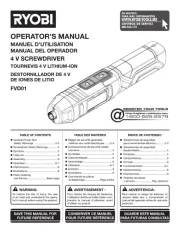
13 Mei 2025
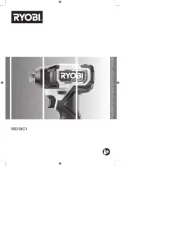
10 Februari 2025

15 November 2024

5 November 2024

3 November 2024

3 November 2024

23 Augustus 2024

23 Augustus 2024

23 Augustus 2024

23 Augustus 2024
Handleiding Schroefmachine
- Trotec
- Powerfix
- Hitachi
- Biltema
- Cleco
- Truper
- Mac Tools
- Velleman
- AEG
- Stanley
- Meister Craft
- Kawasaki
- Fischer
- Gedore
- Skil
Nieuwste handleidingen voor Schroefmachine
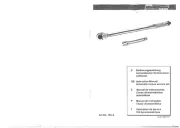
8 September 2025
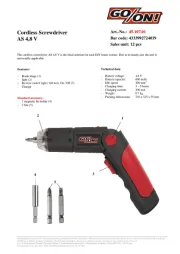
7 September 2025
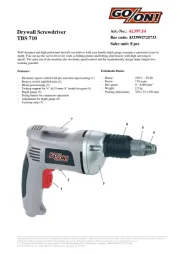
7 September 2025
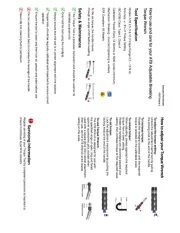
2 September 2025
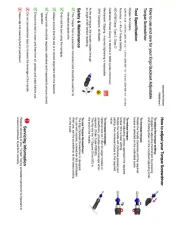
2 September 2025
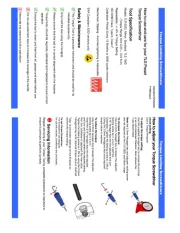
2 September 2025
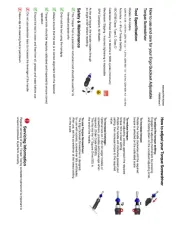
2 September 2025
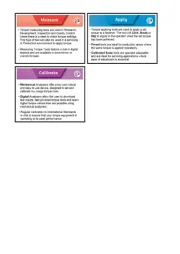
2 September 2025
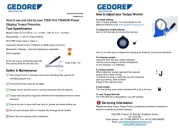
1 September 2025
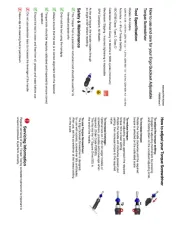
1 September 2025